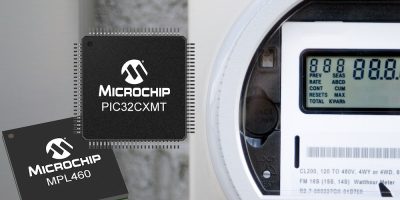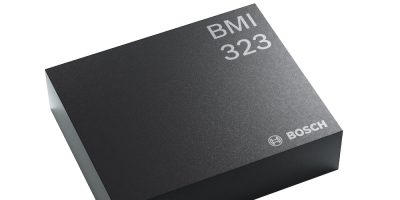To meet the growing demand for a feature-rich yet simple design for developing smart meters, Microchip Technology has developed the PIC32CXMT family of 32-bit microprocessors with a MPL460 power line communication (PLC) modem.
The suite of MCU devices is intended for industrial IoT, commercial and industrial metering applications and offering up to 200MHz operation and scalability up to 560kbyte of memory (SRAM).
There are three versions of the PIC32CXMT family based on a single Arm Cortex-M4F core, a dual Arm Cortex-M4 core and an SoC. The single core, SAM4C, PIC32CXMT-G series, the dual core, PIC32CXMT-C series and the SoC, SAM4CM, PIC32CXMT-SH series.
The MPL460 PLC modem integrates the line driver for signal amplification, which reduces the bill of materials and maintains signal injection efficiency above 40 per cent due to its class-D topology. The PLC modem helps to increase efficiency and reliability based on power delivered to the load and power taken from the supply, explained Microchip. The result is an overall reduction in consumption from the source during transmission.
The PIC32CXMT MCUs provide several transceivers including a radio / PHY, a PLC / PHY or the option to select a PLC+RF hybrid solution. There is also an option for a metrology and communications software suite that is compliant with the American National Standards Institute (ANSI) and International Electrotechnical Commission (IEC) metering standards up to class 0.2 per cent accuracy. It also supports standards for wired and wireless communications, such as G3-PLC and PRIME.
As smart metering devices are connected, the need for security is critical in any design. The PIC32CXMT MCUs offer standard and proprietary on-chip hardware security features to ensure optimal performance and memory utilization.
The PIC32CXMT family and MPL460 modem are supported by Microchip’s MPLAB Harmony v3 embedded software framework. Other resources include IAR Systems, Arm, Keil Development Environment, G3-PLC and PRIME software.
The PIC32CXMT family and MPL460 are now sampling on a limited basis.







